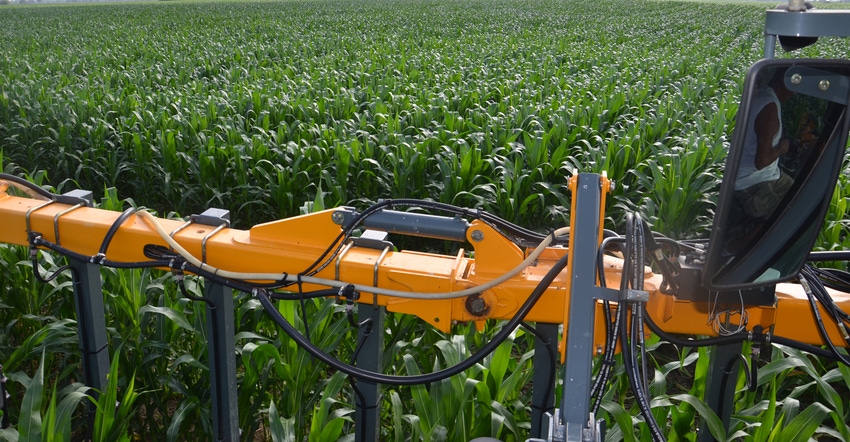
You may have read the story "9 N recommendations based on where you live." The story has been updated to remove references to specific farmers. Please take a look at the latest updated version.
The story itself discusses the nitrogen rate calculator available in a new app called Corn Field Scout for iPhones and Android phones. The app was developed by Purdue University’s Crop Diagnostic Research and Training Center. Corey Gerber is the director.
Both the Corn Field Scout app and Soybean Field Scout app are available from the app store. Each sells for $5.99, and provides much of the information found in the printed versions of the popular Purdue Corn & Soybean Field Guide, plus several exclusive calculators to help you make decisions more rapidly in the field.
One of those is the nitrogen rate calculator. It is based on data collected by Purdue Extension specialists Bob Nielsen and Jim Camberato over the past decade. Some of the N trials were from their plots, and many are from large-scale, on-farm trials with farmers who agreed to participate.
Nielsen and Camberato prepared average nitrogen rate recommendations for each of Indiana’s nine crop-reporting districts. That information drives the calculator. They found large differences in recommended rate in different parts of the state, varying by roughly 50 pounds per acre from the highest to lowest recommendation.
The point of the story was to illustrate how the calculator works, and to emphasize that due to differences in soil type and environment, nitrogen requirements may vary from place to place within Indiana. To humanize the story, names of a few well-respected farmers who happen to live in specific crop-reporting districts were included. They were not contacted in advance, and it was not meant to imply that they used the calculator, followed these recommendations or applied these rates. The intention was to show that this tool and information were available if they chose to use it.
For example, Mike Starkey, Brownsburg, applies far less nitrogen per acre than the amount recommended by the calculator for his area. The rate in the story, based on a set price for N and a specific price for corn, was over 200 pounds per acre. Starkey reports that he typically applies at least 40 to 50 pounds less per acre than that rate. He farms in a no-till system and uses cover crops extensively.
Also note that the recommended rate shown by the calculator would drop if the nitrogen price were higher, the corn price were lower, or both.
Any implication other than that the farmers mentioned live in those crop-reporting districts was unintentional.
About the Author(s)
You May Also Like




